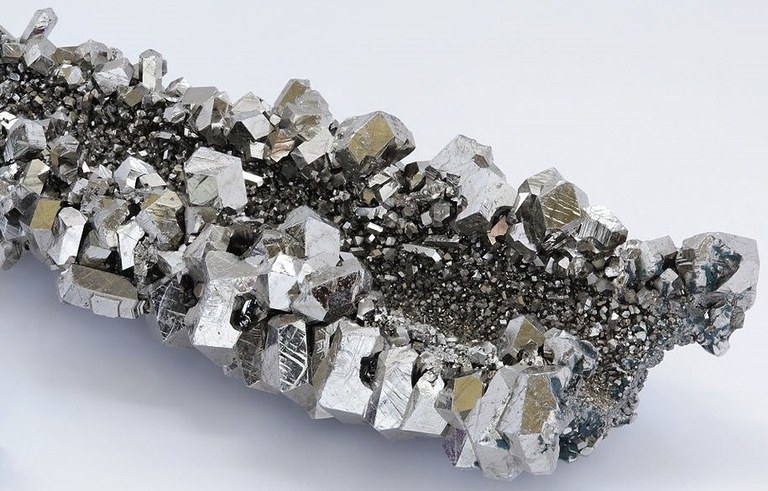Overview of Niobium Products
Posted on August 28, 2021 at 02:20 PM

Introduction:
A chemical element with the symbol Nb (previously Cb) and atomic number 41, niobium is also known as columbium. Niobium is a light grey, polycrystalline, and malleable transition metal that may be used in a variety of applications. Pure niobium has a Mohs hardness value comparable to that of pure Titanium, and it possesses ductility similar to iron. Niobium oxidises relatively slowly in the earth's atmosphere, which is why it's used in jewellery as a hypoallergenic substitute to nickel. Niobium is frequently found in the minerals pyrochlore and columbite, hence the old name "columbium." Niobium was first commercially used in the early 20th century. Brazil is the world's largest producer of niobium and ferroniobium, an alloy of 60–70 percent niobium with iron. When it comes to alloys, the majority of Niobium is utilised in specific steels, such as those used in gas pipelines. In spite of the fact that these alloys only include as little as 0.01 percent of Niobium, it has a positive impact on strength. Niobium-containing superalloys' thermal stability is critical for their usage in jet and rocket engines.
What is Niobium?
A light grey metal, Niobium has a white sheen when polished. A high melting point of 2,477°C and a density of 8.58 g/cm³ make up the metal's characteristics. Even at low temperatures, it may be moulded easily. The ductile substance is commonly found with tantalum in a natural ore and has excellent oxidation and chemical resistance like tantalum. It is a very lucrative material for future innovations. Since Niobium's composition is so unusual, its use in high-tech applications such as electronics, optics and superalloys is in great demand. Superconducting characteristics at extremely low temperatures make it appropriate for use in particle accelerators. Niobium carbide increases the stability of hard metal cutting tools, which enhances their performance.
Optically reflecting surfaces benefit from niobium's anti-reflective characteristics, as well as its scratch-resistant capabilities. For example, optical lenses, displays, and touchscreens can all benefit from its properties. In order to allow wireless data transfer and mobile communication without interruption, single crystals of lithium niobate are employed as the foundation material for radio frequency filters, also called SAW filters.
Niobium is primarily used as an addition to high strength low alloy steel and stainless steel for oil and gas pipelines, automobile and truck bodywork, architectural needs, tool steels, ships hulls, and railroad tracks. Niobium metal and its derivatives, on the other hand, have a variety of supplementary potential uses.
There are various uses for the niobium, but the majority of it is utilised in the manufacture of high-quality structural steel. Niobium is used in nickel-based superalloys, which is the second most common use.
Neo Rare Metals is a conflict-free producer of high purity Niobium Products from columbite ore and secondary (recyclable) materials.
Niobium Products and its Applications and Benefits
1. HSLA (High strength low alloy) Ferroniobium
2. Niobium oxide (Nb2O5)
3. Niobium carbide (NbC)
4. Niobium Powder
5. Niobium metal plates, sheets, wire, rod, tubing
6. Niobium-Titanium
7. Niobium 1% (Zirconium alloy)
8. Vacuum grade Niobium
9. Quantum computer chips
Quantum computers are based on superconducting qubits constructed from aluminium and niobium that lie atop a silicon substrate (the two superconducting electrodes are sandwiched by an aluminium oxide insulator)
10. High-entropy alloys (HEAs)
When exposed to pressures equivalent to those found in the Earth's core, a superconducting tantalum-niobium-hafnium-zirconium-titanium alloy has been proven to conduct electricity with zero resistance. High-entropy alloys (HEAs) are a novel class of metal materials composed of random atomic-scale combinations from the periodic table's "transition metal" group. Because of the random arrangement of metals on their lattice points, HEAs have both the characteristics of a glass and of crystallised materials.
11. Gravimeters
Changes in the Earth's gravitational field are measured using gravimeters There's a superconducting gravimeter near the Belgian town of Membach that employs a small niobium metal sphere hung in a magnetic field at -263oC (9.2 K), close to absolute zero. In addition to pulling and dragging the sphere, changes in the gravitational field can cause the magnetic field to fluctuate, causing electrical signals to be sent to adjacent sensors. To achieve superconductivity, the niobium sphere must attain a temperature of 9.2 K, where magnetic field lines flow around rather than through it. At this low temperature, niobium wire coils offer minimal resistance to the electrical current flowing through them, resulting in a perfectly steady magnetic field that lifts the niobium ball off the ground. A reference weight linked to mechanical springs was employed in earlier gravimeters before the advent of superconductors made from niobium
12. Orthopedic Prosthetics
Titanium niobium nitride (Ti-Nb-N) is a solid surface modification that has been used in orthopaedic applications such as prosthetic knees to offer against abrasion and allergic sensitivity. Due to its ability to function as a physical barrier, TiNbN-coated prostheses can be safely implanted in metal sensitive patients.
Using titanium-zirconium-niobium alloys, robust and durable implants that are compatible with the human body are possible.
Conclusion
Niobium products supplied by Amardeep Steel are used in multiple industries. Our manufacturing standards are extremely reliable and priced at the best marketplace benchmark.